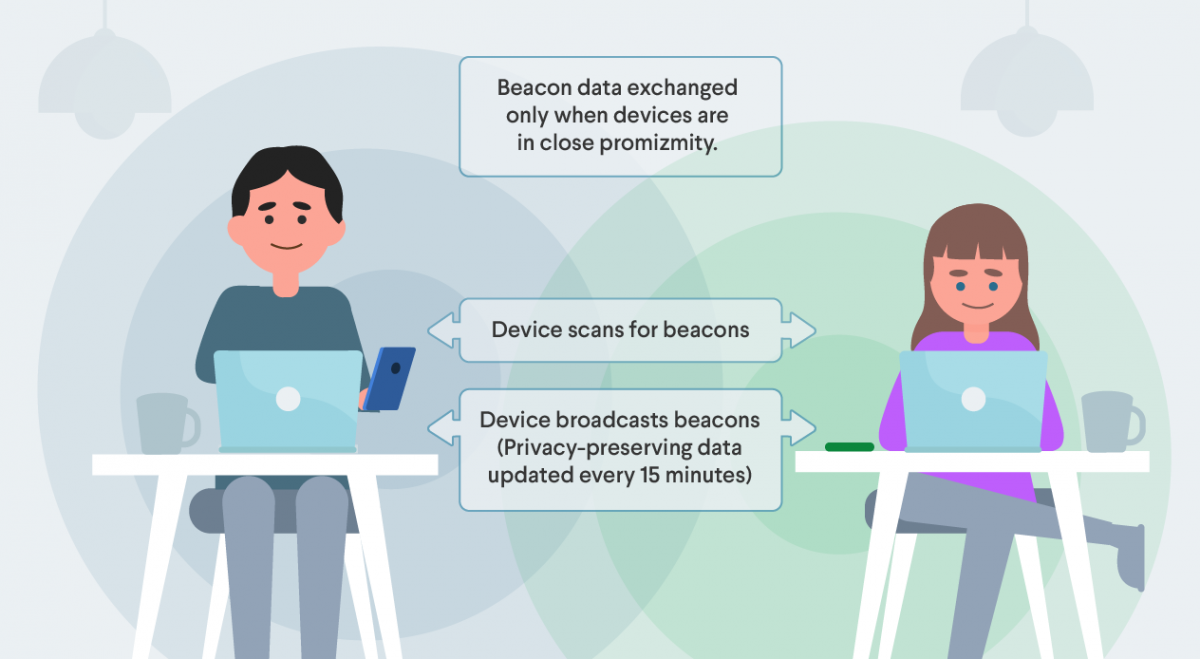
A Brief Tour of Swift UI
iOS MacThe best user interfaces are interactive and responsive to the user. UIKit is a capable framework that lets you build apps that users expect,...
Contact tracing capabilities are likely coming to your device sometime in the near future. Google and Apple are taking a stance to protect your privacy while still supporting tracing efforts. In this post, we will break down the measures taken by Google and Apple when architecting their solution to contact tracing.
During an epidemic or a pandemic, contact tracing is part of the routine protocols followed by a health organization. Traditionally, this has been a very manual process, whereby a healthcare-worker interviews a patient with a positive diagnosis to track their whereabouts prior to the diagnosis. The goal is to create a list of people the patient came in contact with and to notify them of the exposure so they too can get tested. Given that we live in a world where everyone carries a smartphone, technology can potentially facilitate this function easily and efficiently.
During this global pandemic, many countries have created their own solution to digital contact tracing, though many of these technical solutions have privacy concerns. Not to mention that the name “contact tracing” itself has a big brother connotation to it, which elicits the notion of a nanny state. Google and Apple have joined forces to create a privacy-preserving contact tracing solution. They have stated that user privacy and security are central to the design of their contact tracing capabilities. This is reflected in Apple’s and Google’s careful naming of the technology called Exposure Notifications rather than Contract Tracing. Furthermore, their design gives a user fine-grained control over permissions.
At a high level, devices are essentially using Bluetooth to exchange some data. Exposure Notification leverages Bluetooth Low Energy (BLE) to transmit data to nearby devices. The transmission of data via BLE is known as a beacon. The beacon contains a randomized string of numbers that changes every 15 minutes. The device is constantly broadcasting beacons while scanning for beacons from other devices. When a device comes near another device broadcasting the Exposure Notification beacons it stores them locally on the device. At least once a day, the device downloads a list of keys for the beacons that have been identified as belonging to people with a confirmed positive diagnosis. Each device locally matches the beacons it has stored against the ones downloaded from the server to see if there is a match to confirm exposure. Once confirmed, the user is notified of the exposure and advised on the next steps.
Let’s dive deeper to find out how the Exposure Notification API preserves the user’s privacy in this beacon data exchange:

Upon examining all the pieces from opting-in, broadcasting beacons, scanning beacons, diagnosis submission, and finding a match, we find that Apple and Google have built privacy protections for individuals at many key steps in the data flow. The implementation, however, is not without some risk. Specifically, in the first phase of the rollout of Exposure Notifications, Apple and Google require developers of the app to host a centralized server of their own to store the diagnosis keys. In the second phase, the server requirement is eliminated because Apple and Google take on that burden themselves.
Contact tracing apps are already being built without a standard of privacy set; regardless of the efficacy of contact tracing as a solution, there’s a moral responsibility to build these apps with privacy in mind. It appears Apple and Google are taking this responsibility seriously as they pioneer their Exposure Notification APIs.
Curious about building an app with Exposure Notifications? Get in touch and let’s see how we can partner together to keep people’s health and privacy safe and sound by leveraging Exposure Notifications

The best user interfaces are interactive and responsive to the user. UIKit is a capable framework that lets you build apps that users expect,...

At Big Nerd Ranch, our iOS team has created a library called Deferred to help you work with values that have not yet been...
